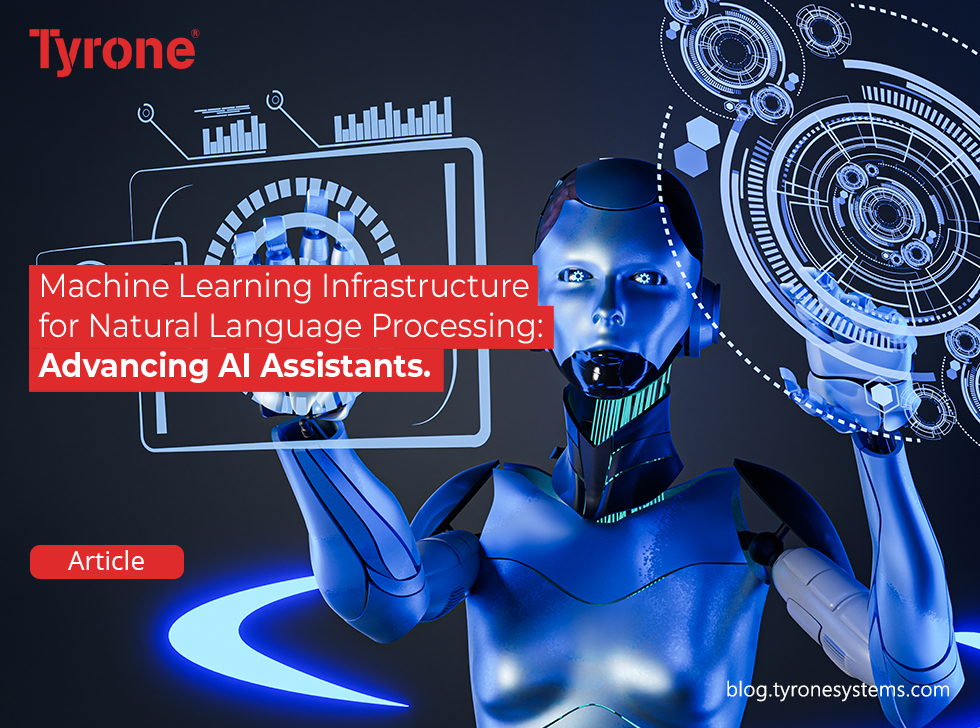In today’s rapidly evolving technological landscape, artificial intelligence has taken center stage, transforming the way we interact with machines and devices. One of the most remarkable manifestations of this evolution is the emergence of AI assistants that leverage Machine Learning Infrastructure for Natural Language Processing (NLP). These AI assistants have become an integral part of our daily lives, revolutionizing the way we communicate, seek information, and execute tasks. In this article, we delve into the crucial role of machine learning infrastructure in advancing AI assistants and propelling the field of Natural Language Processing forward.
Understanding NLP and its Significance
Natural Language Processing (NLP) is a subfield of artificial intelligence that focuses on enabling computers to understand, interpret, and generate human language. This breakthrough technology bridges the gap between human communication and computational analysis. By deciphering human language, NLP opens up a plethora of possibilities, including sentiment analysis, language translation, text generation, and more.
The Role of Machine Learning in NLP Advancements
1. Training Data and Preprocessing Effective NLP models heavily depend on vast and diverse training datasets. Machine learning algorithms ingest this data to learn the patterns, nuances, and semantics of human language. Data preprocessing, including tokenization, stemming, and part-of-speech tagging, enhances the quality of input for better model training.
2. Word Embeddings Word embeddings, such as Word2Vec and GloVe, have transformed NLP by representing words as dense vectors. This enables algorithms to capture semantic relationships and contextual meanings, enhancing the accuracy of language understanding.
3. Recurrent Neural Networks (RNNs) for Sequence Modeling RNNs excel in tasks requiring sequence modeling, making them ideal for applications like language generation and machine translation. Long Short-Term Memory (LSTM) and Gated Recurrent Units (GRUs) are advanced RNN variants that address vanishing gradient issues, improving training efficiency.
4. Transformers: A Paradigm Shift The introduction of Transformers marked a turning point in NLP. Models like BERT, GPT-3, and T5 employ attention mechanisms to consider context from the entire input sequence, revolutionizing tasks like question answering, summarization, and language generation.

Infrastructure: The Backbone of NLP Advancements
1. Scalable Computing Resources Training large NLP models demands significant computing power. Cloud-based platforms, GPUs, and TPUs provide the necessary scalability, enabling researchers to experiment with massive models for improved accuracy.
2. Distributed Training Distributing training across multiple devices accelerates the learning process. Technologies like Data Parallelism and Model Parallelism ensure efficient use of resources and faster convergence.
3. Transfer Learning and Fine-Tuning Transfer learning allows models trained on extensive datasets to be fine-tuned for specific NLP tasks. This approach significantly reduces training time and resource consumption.
4. Model Deployment and Inference After training, deploying models to production requires optimized inference engines. Containerization and microservices architectures streamline this process, ensuring real-time response and scalability.
The Impact on AI Assistants
The synergy between machine learning infrastructure and NLP has transformed AI assistants into remarkably intuitive and capable tools. Conversational agents, like Siri, Alexa, and Google Assistant, can comprehend and respond to natural language queries with remarkable accuracy. They can provide information, set reminders, schedule appointments, and even entertain through engaging interactions.
Challenges and Future Directions
As NLP and AI continue to advance, challenges such as bias in language models, data privacy concerns, and handling complex linguistic nuances remain. Researchers are working to mitigate these issues and develop ethical AI systems that benefit all of humanity.

Conclusion
Machine learning infrastructure has catapulted the field of Natural Language Processing into new realms, empowering AI assistants to understand and interact with humans in ways previously thought impossible. This symbiotic relationship between technology and language holds the promise of a future where machines comprehend human intentions seamlessly. As we navigate this transformative journey, ethical considerations must remain paramount, ensuring that the AI revolution remains a force for good.












